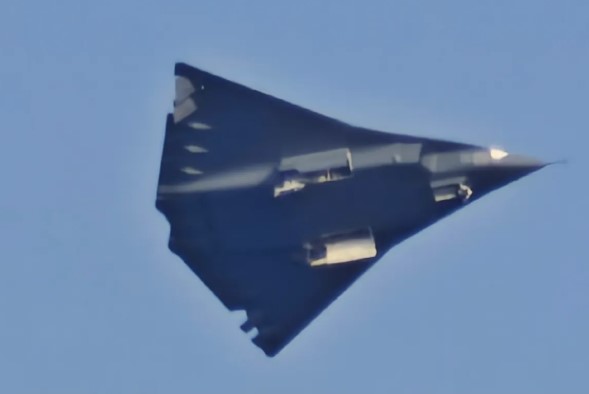China is rapidly advancing its military capabilities, and at the forefront of this modernization effort is the development of its sixth-generation fighter jet. While much of the information surrounding the program is shrouded in secrecy, there have been tantalizing glimpses, hints from official sources, and speculative sightings that provide a fragmented yet fascinating picture of what could be one of the most advanced military aircraft of the coming decades.
The Strategic Context
The race for sixth-generation air superiority is heating up among the world’s major powers. The United States, which has dominated the skies with fifth-generation aircraft like the F-22 Raptor and F-35 Lightning II, is developing its Next Generation Air Dominance (NGAD) platform. Europe is pursuing the Future Combat Air System (FCAS) and Tempest programs. Meanwhile, China, already a leader in military technology and artificial intelligence, is emerging as a major player in the sixth-gen race, building upon its experience with the fifth-generation Chengdu J-20.
The People’s Liberation Army Air Force (PLAAF) has openly acknowledged the need for a next-generation platform that not only keeps pace with global competitors but also secures China’s strategic interests in the Indo-Pacific and beyond.
What We Know: Official Statements and Technology Trends
While Chinese military projects are typically opaque, some official remarks and state-run media reports have provided limited insight into the sixth-generation program. In 2019, Wang Haifeng, the chief designer at Chengdu Aircraft Industry Group (the company behind the J-20), confirmed that work had begun on a sixth-generation fighter and that it could enter service by 2035.
Based on analysis of statements, patent filings, and research publications, several core capabilities are expected:
1. Manned-Unmanned Teaming (MUM-T):
China is investing heavily in drone technology and artificial intelligence. The sixth-generation fighter is expected to operate as a command hub for swarms of loyal wingman drones, enhancing its strike and reconnaissance capabilities while reducing risk to human pilots.
2. Stealth 2.0:
Building on the stealth capabilities of the J-20, the new fighter will likely employ advanced materials and design features to defeat both radar and infrared detection. Electromagnetic signature management may also be part of the aircraft’s suite of stealth technologies.
3. Directed Energy Weapons:
There is speculation that China’s new fighter could incorporate high-powered lasers or microwave weapons for missile defense or disabling enemy systems, though such technologies are still in their experimental phase.
4. Hypersonic Weapon Integration:
The aircraft may be capable of launching hypersonic missiles, further reducing reaction time for adversaries and increasing its effectiveness in first-strike scenarios.
5. Advanced Propulsion and Supercruise:
Reports suggest that the jet may feature adaptive-cycle engines, allowing for both high efficiency and extreme speed, including sustained supersonic flight without afterburners.
Design and Sightings: What Has Been Seen
Since 2021, online military communities and defense analysts have reported sightings of mysterious aircraft at various Chinese military airfields. While these have not been confirmed as sixth-generation prototypes, some experts believe they could be early testbeds for new technologies.
In particular, satellite imagery of test facilities in Chengdu and Xi’an has revealed unusual airframe shapes — some resembling large, tailless flying-wing designs, similar to the conceptual renderings of NGAD or the B-21 Raider. These could suggest that China is experimenting with highly blended stealth configurations and perhaps even optionally manned platforms.
In 2023, blurry images circulated on Chinese social media platforms like Weibo and TikTok, showing what appeared to be a large, delta-wing aircraft escorted by J-20 fighters during a test flight. The Chinese government has neither confirmed nor denied the authenticity of the photos, fueling further speculation.
Chengdu vs. Shenyang: Internal Rivalry?
China’s two leading fighter manufacturers — Chengdu Aircraft Corporation (CAC) and Shenyang Aircraft Corporation (SAC) — are reportedly competing or collaborating on the sixth-gen program. While Chengdu is credited with the J-20, Shenyang is known for the FC-31 (J-35), a stealth fighter with carrier potential.
Some analysts believe that SAC could be focusing on a naval version of the sixth-generation jet, while Chengdu leads the development of a land-based variant for the PLAAF. This dual-track development approach mirrors the U.S. strategy with the NGAD, where different branches of the military may receive tailored versions of the same core platform.
The Role of Artificial Intelligence and Quantum Tech
China has made substantial investments in AI, machine learning, and quantum computing — all of which could feature heavily in the sixth-generation fighter. AI may support autonomous flight, real-time threat analysis, and intelligent electronic warfare systems. Quantum radar and communications could offer jamming-resistant, ultra-secure capabilities that change the very nature of aerial warfare.
Challenges and Unknowns
Despite the ambition, China faces several technological and logistical hurdles:
- Engine Development: One of China’s long-standing weaknesses has been in developing reliable, high-performance jet engines. The sixth-gen jet will likely require engines significantly more advanced than the WS-10 or even the WS-15 currently in development.
- Systems Integration: Combining stealth, AI, hypersonics, and advanced sensors into a single airframe requires a level of technological synergy that even the most advanced militaries struggle to achieve.
- Cost and Scale: Developing and fielding such a cutting-edge platform is enormously expensive. Balancing high-end development with the need for mass production may pose a serious strategic dilemma.
Global Implications
If China succeeds in fielding a true sixth-generation fighter by 2035 — or earlier — it would not only transform the balance of power in the Asia-Pacific but also elevate China to a co-leader or even a pioneer in future aerial warfare. The implications for regional security, military strategy, and international diplomacy would be profound.
For the United States and its allies, China’s progress serves as a call to accelerate their own sixth-generation programs, reinforce alliances, and reimagine their strategies for air superiority in an increasingly contested sky.
Conclusion
China’s sixth-generation fighter program remains officially unacknowledged in many ways, but the pieces are beginning to form a clearer picture. Through technological investment, strategic foresight, and the experience gained from earlier generations of fighters, China is laying the groundwork for a jet that could redefine air power. While much remains uncertain, one thing is clear: the skies of the 2030s and beyond are shaping up to be more competitive — and more lethal — than ever before.




